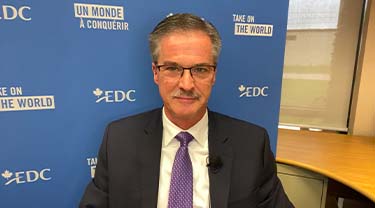There’s a huge cash-stash in the economy? Twenty months on in the pandemic, and most people don’t seem to be aware of this. That doesn’t matter; it’s there, and it’s pretty critical to the outlook that we know when and how this money will be spent. Skeptics have a hard time believing we’ll ever actually see it. Is it a one-and-done addition to the nest egg, or should we get ready for a further wave—or multiple waves—of demand?
If it really is there, well, how did it get there in the first place? Good question. The first wave happened when the economy initially clamped down in March 2020. Although job losses soared, most people remained employed. But with entire industries shuttered, including travel, entertainment, the food and beverage industry, mass transportation and the like, suddenly, there was a lot less to spend on. Savings rates spiked to previously unthinkable levels around the globe. Seems the windfall was simply direct-deposited into the cash-flow account and forgotten about.
Why all the fuss then; is it really that big a deal? Surprisingly, yes it is. This isn’t one of those moments where a few bucks each is adding up to a lot of extra money. This time around, the cash pileup adds to 13% of gross domestic product (GDP) in Canada, and more than 17% in the United States. Think of it this way: We all just saved 13% of our annual salary, Americans even more. In any given year, that’s not easy to do. And it’s hard to imagine that once the dust of the pandemic settles—and there’s growing talk of that day being imminent—that there won’t be a memorable spending moment.
After all the world has been through lately, it’s understandably hard for some to wrap their minds around the notion of consumers confident enough to part with their winnings. Yet there are a number of good reasons to believe that’s just what’s about to happen:
- As the economy reopens fully, there’ll once again be a lot more to spend on. The travel industry will lure the timid back into airplanes and cruise ships with deals too good to be true. Sports venues and concerts are filling up as we speak. And did you notice? The daily commute is beginning again as office towers reopen and in-person work resumes. There’s more, but this is a good start.
- As we see others re-engaging in the economy, the rest of us will try to get what remains of the first-mover discounts and feel better about getting back to normal. And after the almost two-year relapse, we may just feel like treating ourselves to a bit more than the usual.
- The desire to spend is indicated in what we’re all doing with this money. It’s not being put into higher-yield investments. It’s not being converted into gold, which is still most peoples’ ultimate financial safe-haven. Rather, it’s being parked in no-interest demand deposits—the place we put money when—you guessed it—we intend on spending it.
- Cynics respond by saying that ready cash reflects reticence—people are keeping it there precisely because they are worried they may need it in a hurry. That might make sense if their current spending patterns also reflected heightened worry. However, another factor is that since the pandemic hit, we’ve collectively binged on housing and vehicles—two of the largest, lumpiest expenditures we have, and ones we normally rein in tightly during an economic downturn. We still want to spend.
- Finally, a bit of econ-jargon. It’s called the non-satiation constraint, and basically assumes that if we have, we will spend. It’s hard to believe, given all we have been through, that we don’t want to break away from the restraints we’ve been under, and celebrate our post-pandemic freedom a bit. Or more than a bit. This squares with past practice, and if true, will provide a lot of needed spark to the world economy that will itself encourage more of this pent-up money to spill into the system.
The bottom line?
Pandemic notwithstanding, this has to be about the best news in the world economy today: There’s a huge groundswell of pent-up demand that’s poised and ready to powerfully support recovery everywhere. And there’s enough there to keep things going for the next few years. In fact, our key issue is going to be finding the capacity to accommodate all of that growth. Sort of a nice problem to have, but be warned: Preparation is both needed and challenging at present. Onward to growth!
This commentary is presented for informational purposes only. It’s not intended to be a comprehensive or detailed statement on any subject and no representations or warranties, express or implied, are made as to its accuracy, timeliness or completeness. Nothing in this commentary is intended to provide financial, legal, accounting or tax advice nor should it be relied upon. EDC nor the author is liable whatsoever for any loss or damage caused by, or resulting from, any use of or any inaccuracies, errors or omissions in the information provided.






